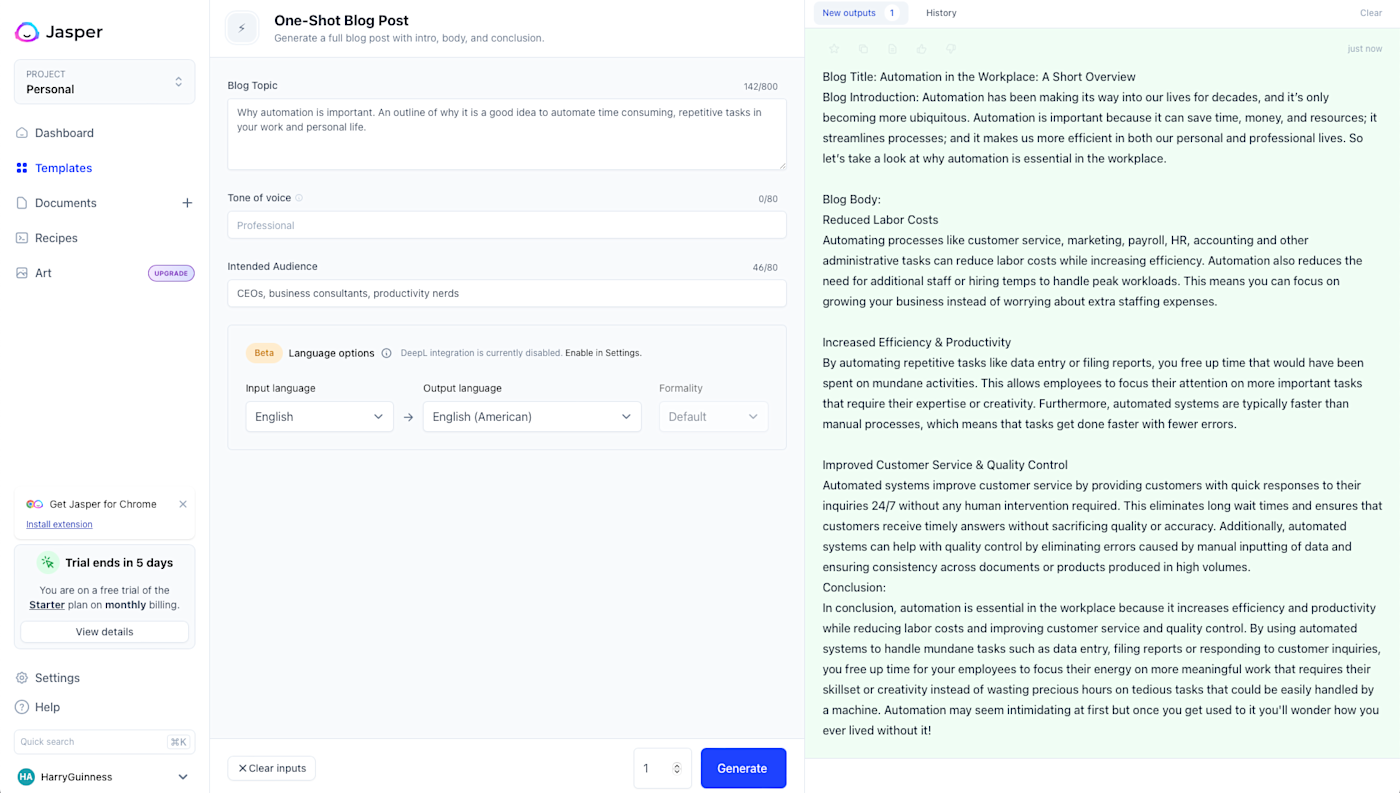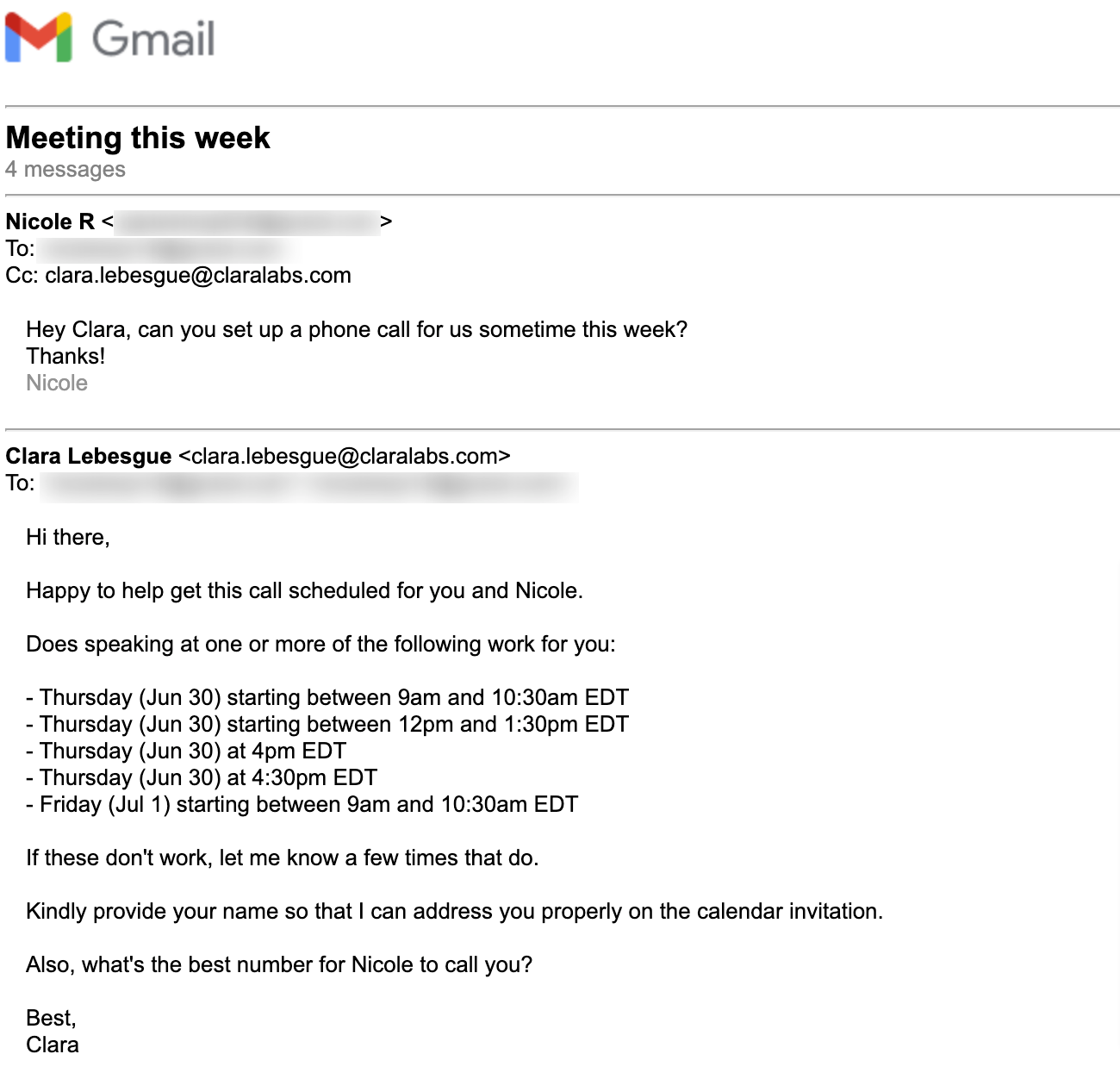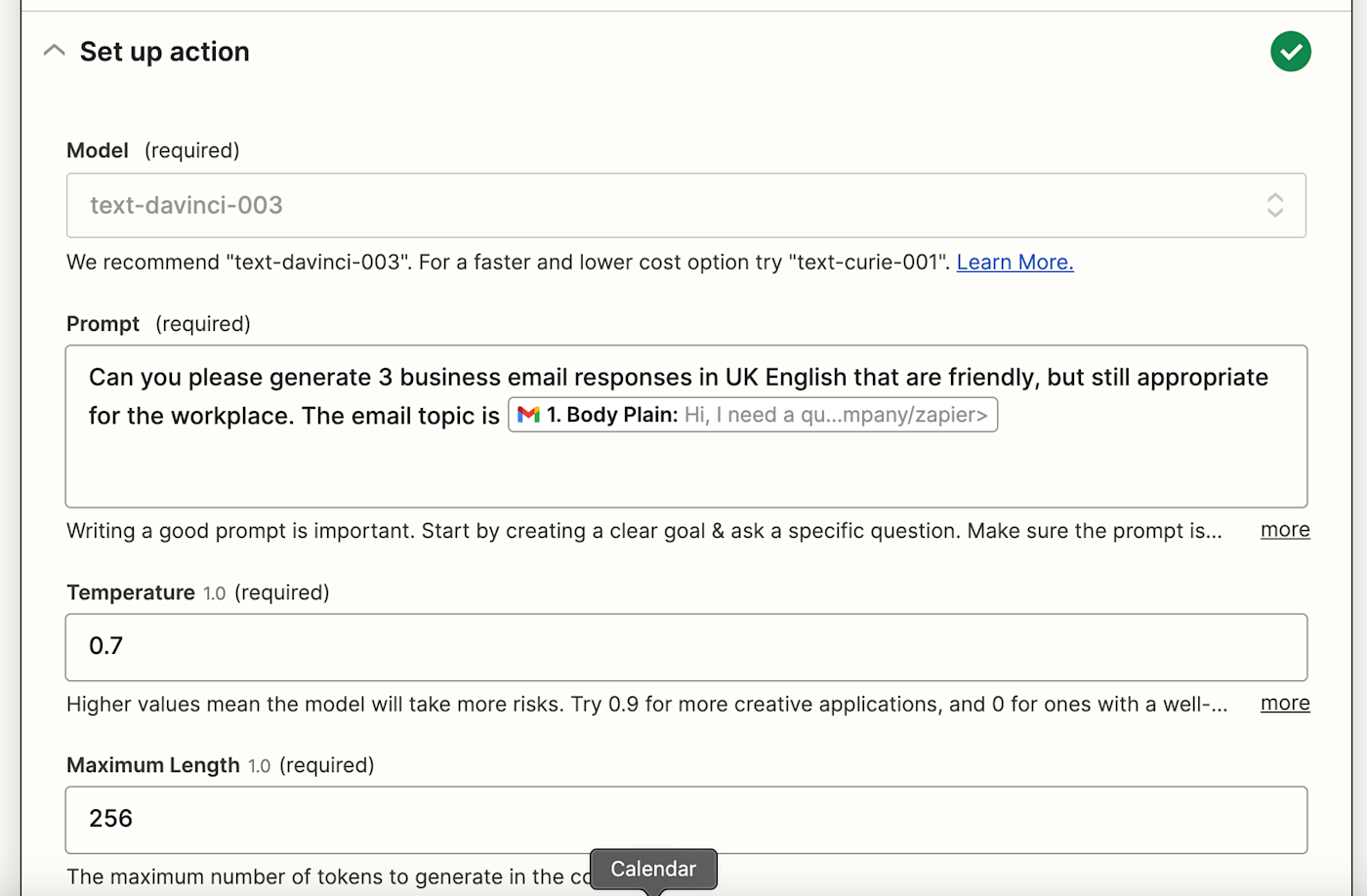AI is having a serious moment. What was once a sci-fi or marketing talking point is now widely available to consumers and businesses (at least in some contexts for some definitions of what counts as artificial intelligence). We haven't got HAL 3000 or Skynet yet, but ChatGPT and Stable Diffusion are at least taking over social media.
Next up? Hopefully business, not the world.
If you're scared about what AI means for your career—or excited about what they could do for your business—keep reading.
AI for businesses: Examples of artificial intelligence in business
AI-powered systems are increasingly present in the world around you, often in subtle ways. The big, interactive AI use cases like DALL·E 2 and ChatGPT are flashy, but they're far from the most popular ways it's used. Business AI is going to start changing the way we work, so after you're done asking ChatGPT for jokes and posting AI selfies, take a look at these examples of AI in business.
Recommendation algorithms
Recommendation algorithms are increasingly developed using machine learning—which is considered a subset of artificial intelligence. Netflix, for example, has published a large amount of research about how it uses machine learning. Similarly, Amazon uses AI-driven recommendation algorithms to suggest new products for people to buy. Even Google Search has a few AI components. But in all of these cases, it operates in the background.
Digital personal assistants
Digital personal assistants like Siri and Alexa operate using conversational AI, the process of simulating the experience of talking with another person. It's hard to label each one an individual AI because they have dozens of different functions all operating using different algorithms. For example, Siri's suggestions for apps to open doesn't use the same neural network as its language recognition or the one that determines what settings you've asked it to set your Philips Hue smart lights to. The overall experience, though, is powered by AI.
Customer care services and chatbots
Customer care services and chatbots increasingly have an AI component. If you've ever called a customer care department that asked you to speak your account number or phone number, it was using a speech recognition AI—though since I have an Irish accent, in my experience, not a very good one. Chatbots can also work significantly better with improved language recognition and sentiment analysis. Rules-based versions that just respond to keywords never feel natural, while AI-based ones can offer a more seamless experience.
Marketing content

AI can now generate text that appears written by a human. That means it can be used in AI marketing tools to write blog posts, social media content, emails, and website copy using a service like Jasper. How effective it is depends on the kind of content you're creating and the prompts you give it. Warning: GPT-3 is very good at creating plausible-sounding text, but it also can create plausible nonsense.
Translation
AIs can also convert English language text into other languages, and vice versa. Services like Weglot automate the process for businesses that operate in multiple countries. As soon as you add new web copy or a blog post, it gets converted to your target languages. Of course, these kinds of AIs can (and probably will) still miss a bit of nuance, but with human supervision, it can really speed up the process of having an international website.
AI meeting schedulers

AI meeting schedulers are able to automatically book meetings and other appointments based on your requirements and habits. Want only one afternoon meeting per day or need a long break between calls? Instead of having an open calendar where anyone can grab a slot, an AI scheduler can dynamically adjust things as people request chunks of your time. And it learns your preferences, so it can predict when the best times for meetings will be.
You can also use AI meeting assistants to transcribe your meetings and glean insights from them.
Improved auto-correctors
While basic auto-correct falls short of being an AI, there's a new generation of AI editors like GitHub Co-pilot that look to make intelligent suggestions in real-time. Instead of just autocorrecting to the most common suggestion, they're able to understand what you're trying to do—and help you do it.
Cybersecurity
Cybersecurity and fraud detection algorithms also rely on machine learning—and some can be considered implementations of AI. They look for anomalous patterns in huge amounts of data and then act to shut down potential breaches or stolen credit cards.
Business communication
Business AI can also help you communicate with your clients, partners, and other business contacts. Here's an example of how you can use OpenAI and Zapier to automatically draft emails that reply to messages you receive. Just read them before you click send, please.

More AI examples in business
Those are just some of the more obvious applications of artificial intelligence in business. It could also be used for optimizing work rotations, deciding which clients to prioritize, and even handling things like expenses. Really, the list is endless, and AI will probably make it for us.
The impact of AI on business
There are obviously reasons to be cautious about AI: Tesla's autopilot feature continues to crash cars, Amazon accidentally created a sexist hiring AI, and nearly every major AI product still has some biases because they're trained on content scraped from the internet.
And when it comes to stealing jobs, the growth of AI in business is likely to change things quite a bit. For example, AI content generation tools may not replace humans, but they can certainly increase the speed at which one writer can produce. Similarly, improved chatbots will likely be able to handle more customer support queries and even marketing outreach. It's not that businesses won't need customer care agents, but they'll probably have more of a supervisory role.
Of course, a lot of these tools still haven't been built yet. So for now, AI might be most used as the hot new marketing word.
Related reading:





